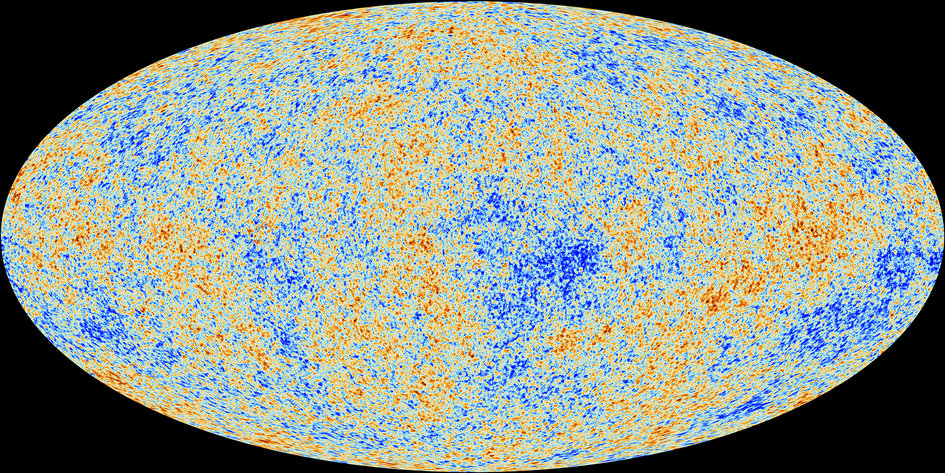In this series we are exploring the weird and wonderful world of astronomy jargon! Get a good look at today’s topic: the cosmic microwave background!
The cosmic microwave background, or CMB, is all around you. Indeed, it’s by far the brightest object in the entire universe, responsible for over 99% of all photons.
And it’s a baby picture of the universe.
When our cosmos was very young, it was much smaller, hotter, and denser than it is today. Indeed it was so hot and dense that all the matter in the universe was a plasma, with the electrons ripped out of atoms and constantly mixed up with the high-energy radiation that soaked the universe at the time.
But when our universe was about 380,000 years old, it cooled to the point that the electrons could settle into their little atomic homes, turning our cosmos into a neutral gas of hydrogen and helium. That left all the radiation hanging around with nothing to do, so off it went.
At the time it was released, that radiation was literally white-hot. But as the ages passed, our universe expanded. That radiation cooled, and its wavelength stretched. All the way down to where it today, 13.8 billion years later, in the microwave part of the electromagnetic spectrum.
The CMB was discovered accidentally in the 1960’s once we finally developed sensitive microwave detectors. It confirms that the general story of the big bang is accurate; there are no other theories of cosmology that can explain its existence.
Today, astronomers work with detectors on the ground and in space to make accurate maps of the CMB. The latest all-sky map comes courtesy of the Planck telescope, which was a joint venture between NASA and the ESA. Those maps reveal tiny little temperature differences, no bigger than one part in a million.
Those temperature differences tell us what the universe was like billions of years ago. The temperature differences tell us that the universe wasn’t perfectly uniform – there were also tiny differences in density. Those little seeds would eventually grow up to become galaxies, groups, and clusters…the largest structures in the universe today.

